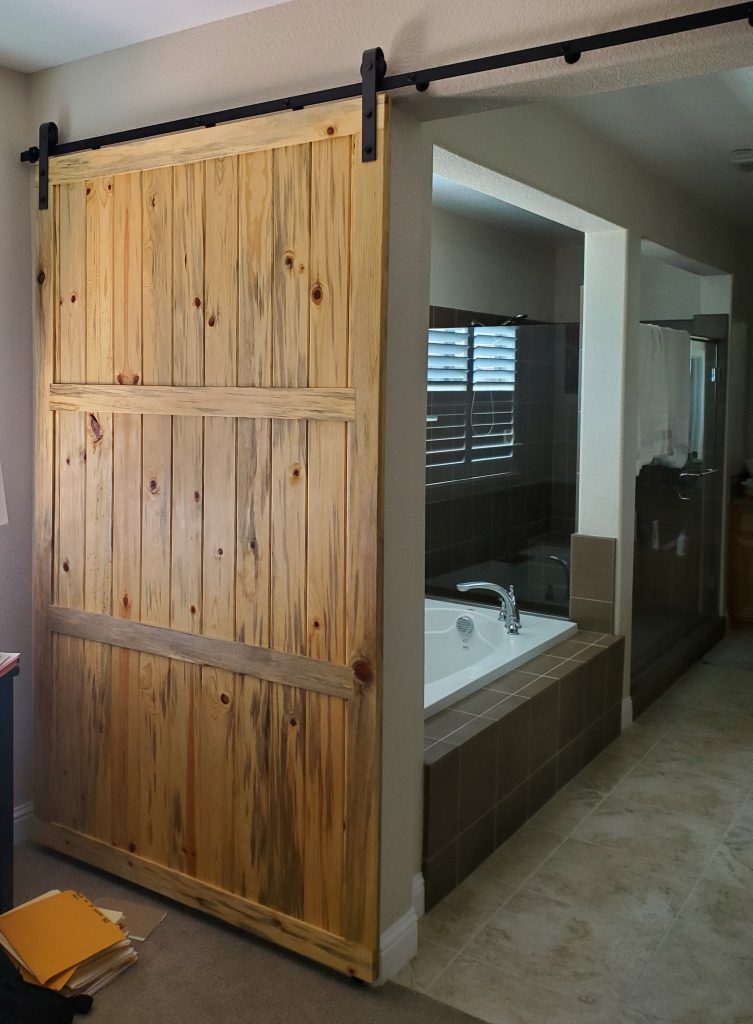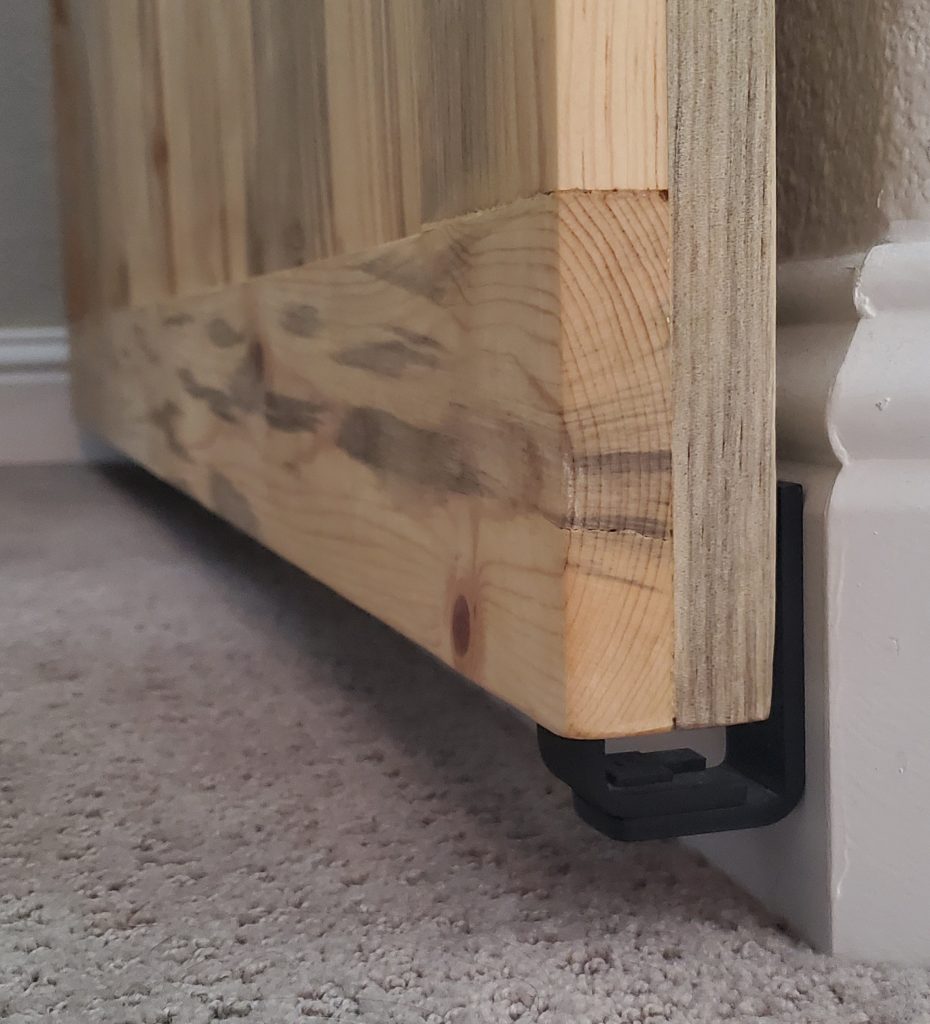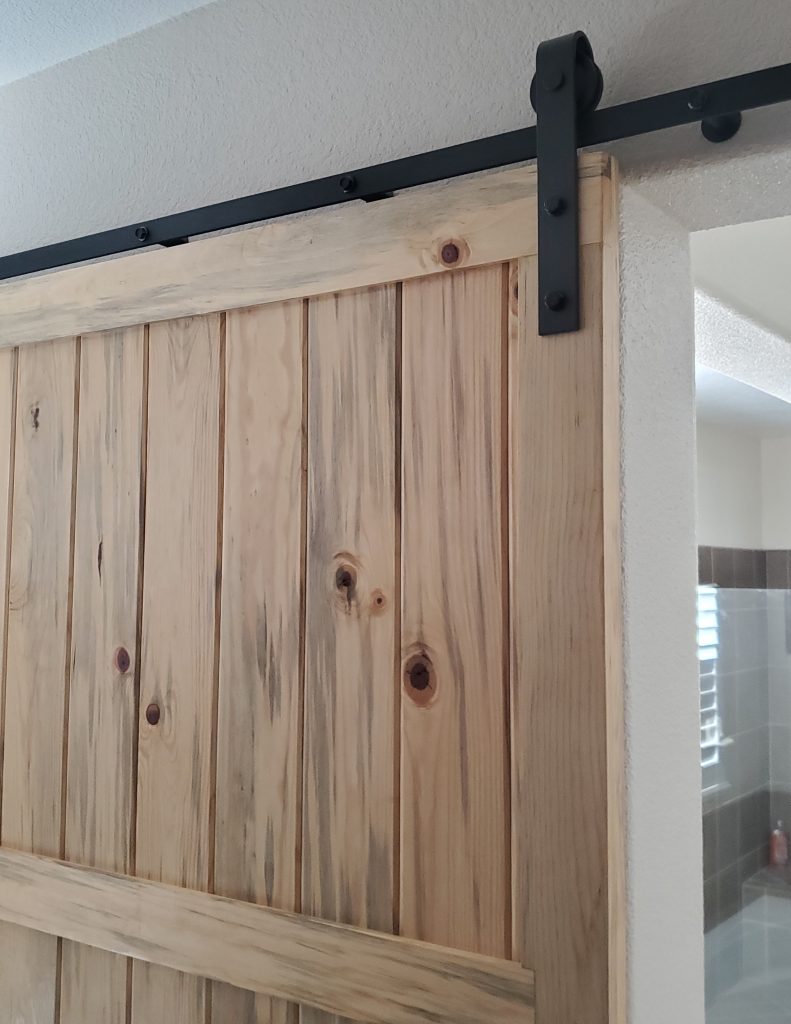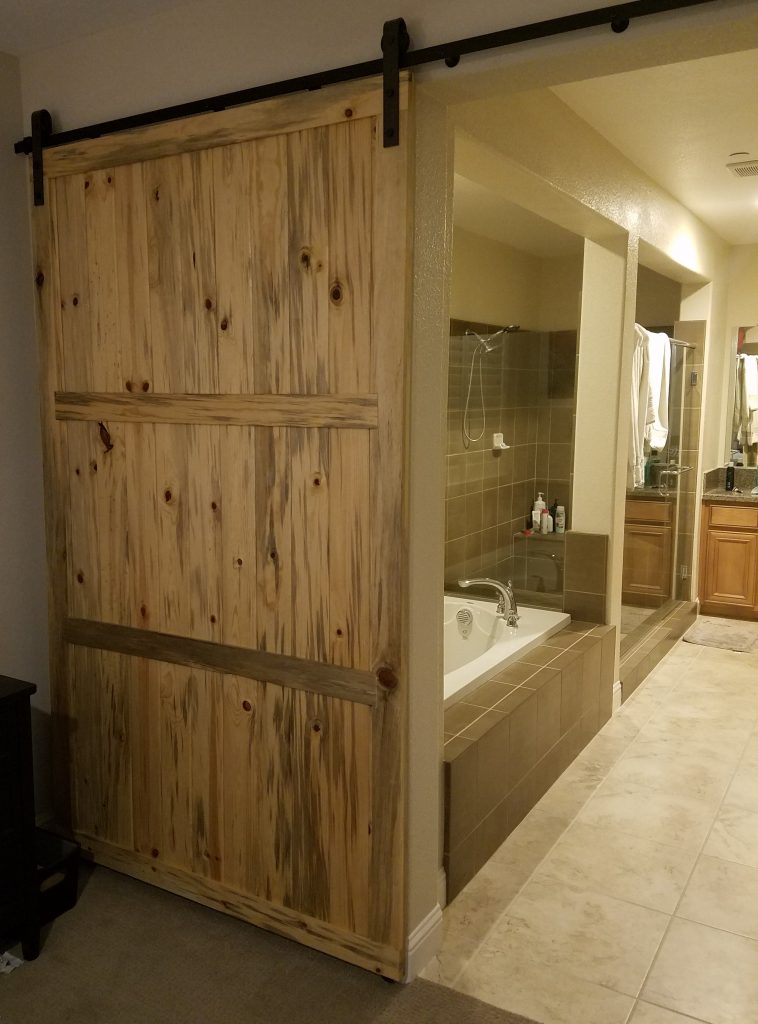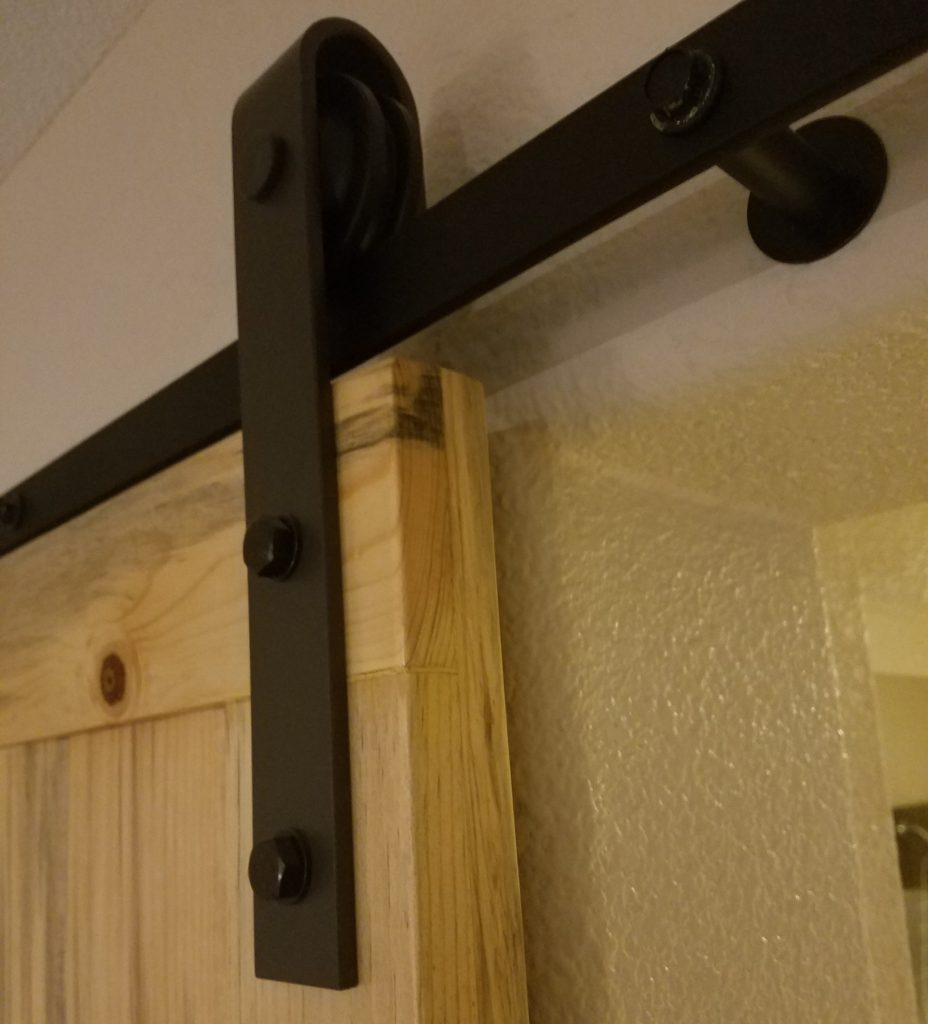Large openings need large doors. This door is 7’6″ tall and 4’6″ wide. This size would only be available as a custom purchase. The few custom barn-door websites I found gave quotes starting at $1,100 for a very basic door, plus hardware. That’s a lot of $$$ so I built this one for $95 in lumber and $75 in hardware.
Hardware:
I did not buy a rail kit because all of the kits I saw in the length I needed, used two separate rails to reach the length needed. I wanted a single piece rail so I went to local sheet-metal supply yard and purchased 10′ of 1.25″x1/8″ steel bar for about $11. I cut that down to about 9.5′ length. My recommendation for anyone replicating would be to buy a little bit wider bar. 1.5″ bar seems to be the size that most end-stoppers are sized for.
I couldn’t find mounting hardware or standoffs for the rail, at any reasonable price. Instead I went to hardware store, purchased 7 large flat washers, a 2′ piece of 1/2″ diameter (cut into 2″ long pieces for standoffs x 7), and 7 lag bolts. Holes were drilled through the rail. Lag bolts go through the holes in rail, through the copper pipe pieces serving as stand-off, through the washer that keeps the copper pipe from pressing into the sheetrock, and into the holes that were predrilled into the wall-stud/header. Of course the hardware was all spray painted with multiple coats of black paint, but nothing else to it. This method saves you money on hardware and allows for a one piece rail which is much easier to hang than trying to align two separate rails.
The rest of the hardware was purchased on Amazon. The 2 rollers were about $25. The bottom tab that keeps the door from flopping in or out was $12. and the stoppers that are attached on each end of the rail were $13.
Hint: Use a level and make sure bar is level or the door may decide to slide on it’s own. If your door does end-up sliding on it’s own and won’t stay put, the common almost invisible solution is to attach a magnet bar near a top-back corner of door. Then attach a corresponding magnet at a location on the wall where the wall-magnet attracts to the door-magnet and holds it in that open and-or closed position. Use appropriate spacers for offset distance. The magnets should not touch and should provide just enough pull to hold the door from rolling away on it’s own.
Lumber:
The lumber for this door is blue-pine which really is just common pine that was infested by the mountain pine beetle. The outside and cross framing of the door is made with 2 layers of 1×4 in 8 foot lengths (total combined thickness of door is 1.5″) The interior panels are 5″ wide ship-lap (8-feet long, 3/4″ thick). Lumber was purchased at Home-Depot and was less than $100. For my size door, I used 10 pieces of each.


